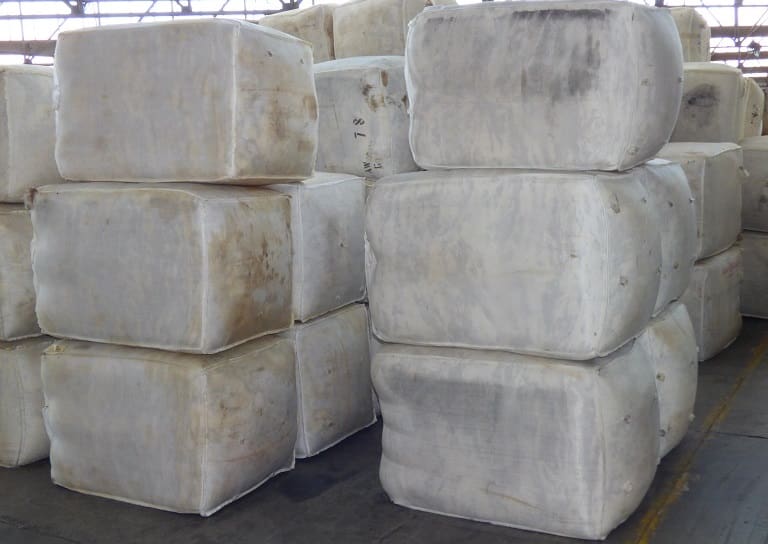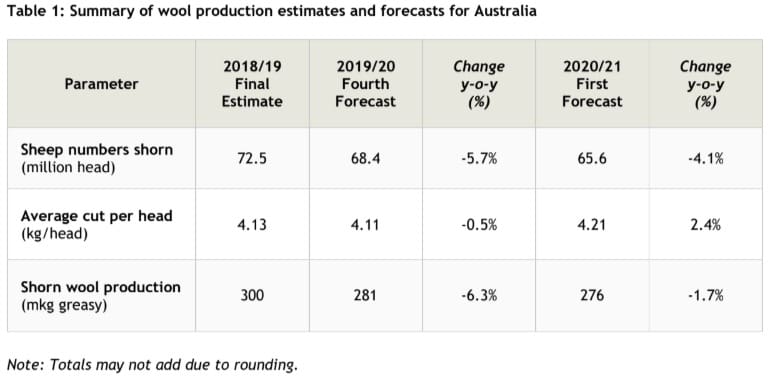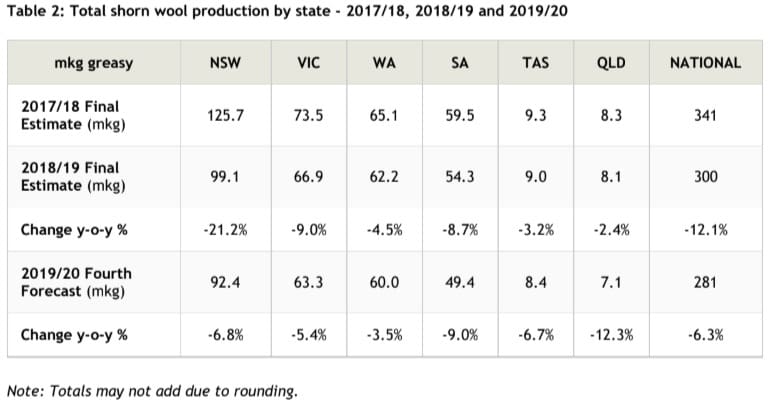
AUSTRALIA’S wool production is predicted to drop further to 276 million kilograms next year, with clip recovery expected to be slowed by sheep meat flock and cropping growth, ewe replacement costs and COVID-19 impacts.
The Australian Wool Production Forecasting Committee today made a fourth forecast of shorn wool production for the 2019/20 season of 281 million kilograms (mkg) greasy, a 6.3 percent decline on the estimate of 300 mkg greasy in 2018/19.
The number of sheep shorn in Australia during 2019/20 is forecast to fall by 5.7pc to 68.4 million.
The AWPFC’s first forecast of shorn wool production for the 2020/21 season of 276 mkg greasy is a 1.7pc decline on the 2019/20 forecast. The committee expected low sheep numbers, opportunistic cropping in mixed farming regions and wool price uncertainty would contribute to a slow recovery in shorn wool production, despite the favourable seasonal outlook across many wool-producing regions of the country.

The committee said relatively widespread rain has been welcomed through south eastern Australia and along the eastern seaboard in the first quarter of 2020. However, Western Australia remained dry with on-farm water supplies at low levels and a sharp increase in the number of interstate sheep transfers.
Sheep meat returns, ewe prices and COVID-19 to slow clip recovery

Australian Wool Production Forecasting Committee chairman Russell Pattinson
Committee chairman Russell Pattinson said strong returns for mutton and lamb along with high sheep replacement costs and uncertainty surrounding the impact of COVID-19 on global demand for wool and on wool prices might slow recovery in wool production despite the favourable seasonal outlook.
Sheep shorn numbers are expected to remain at 2018/19 levels in South Australia and Tasmania, but decline in all other states with Queensland (down 13.6pc), New South Wales (down 9.7pc), Victoria (down 6.6pc) and Western Australia (down 2.1pc).
The average wool cut per head is forecast to decline by 0.5pc nationally to 4.11 kg greasy for the 2019/20 season. In Queensland, shorn wool production is forecast to fall by 12.3pc, South Australia down 9pc, New South Wales down 6.8pc, Tasmania down 6.7pc, Victoria down 5.4pc and Western Australia down 3.5pc (Table 2).

Australian Wool Testing Authority wool test volumes to the end of March 2020 were down by 5.5pc year-on-year while first-hand offered wool at auction to the end of week 42 was down 17.9pc. The decline in the latter is partly due to the recent downward movement in wool prices with smaller auction offerings and high pre-sale withdrawal evident in recent months. ABS wool receivals from July to the end of December were down 13.2pc compared with the same months in 2018/19.
The national Australian Wool Production Forecasting Committee drew on advice from the six state committees, each of which included growers, brokers, private treaty merchants, sheep pregnancy scanners, representatives from state departments of agriculture and the AWTA. Data and input were also drawn from the Australian Wool Exchange, wool exporters, the Australian Bureau of Statistics, ABARES, and Meat & Livestock Australia.
The state and national committees will next meet in mid-August 2020. The full forecast report will be available on the AWI website at www.wool.com/forecasts from May 8th 2020.

Was this before or after the recent rain events? I think they might have been on the free long lunch funded by our levies.